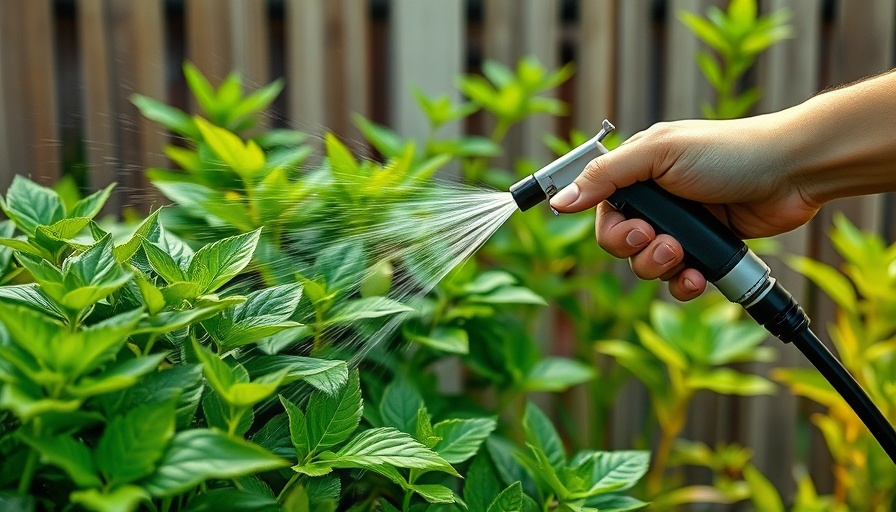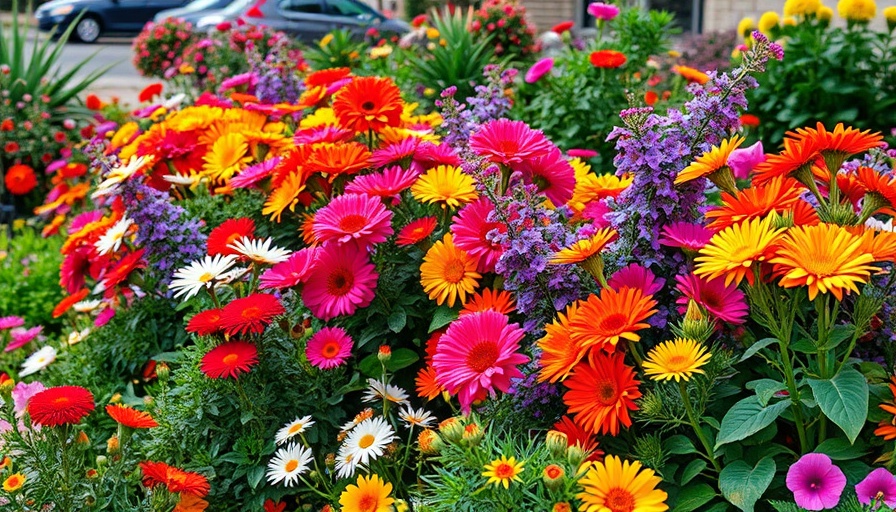
Embracing Sustainable Gardening: A Necessity
As our planet faces increasing environmental challenges, the importance of sustainable gardening has never been more crucial. Water scarcity has emerged as an urgent issue, particularly in urban areas where climate change intensifies droughts and heatwaves. In cities like Vancouver, where rainfall patterns are changing and demand on water resources is increasing, adopting techniques to reduce water usage can be a game changer for gardening enthusiasts.
Transform Your Space: 7 Strategies to Reduce Water Usage
Creating a beautiful garden doesn’t come at the expense of our planet's well-being. Here are seven practical ways to lower your water consumption while maintaining a thriving outdoor space:
1. Replace Thirsty Lawns
Traditional lawns are notorious for their excessive water needs. Instead, consider alternative ground covers such as micro clover or native grasses that require less water. These options not only save water but also support local biodiversity.
2. Plant Native and Drought-Tolerant Vegetation
Utilizing drought-resistant plants can significantly reduce your garden's water needs. Native species are adapted to your local climate and generally require less maintenance and irrigation, which makes them ideal for sustainable gardening.
3. Capture and Store Rainwater
Implementing a rainwater harvesting system can help you collect valuable resources during rainy periods. Creating barrels to store rainwater allows you to irrigate your garden efficiently, using water that would otherwise simply drain away.
4. Redirect Drain Spouts
Another clever practice is to direct downspouts to your garden beds. This technique ensures runoff goes where it's needed most, minimizing water waste and maximizing your garden's hydration during heavy rain.
5. Design a Rain Garden
A rain garden acts as a natural sponge, helping to absorb excess water and reduce runoff. Incorporating native plants in these gardens promotes biodiversity and greatly enhances your yard's aesthetic appeal.
6. Utilize an Olla Water Catchment System
Traditional irrigation can often lead to overwatering. Instead, consider an olla, a clay pot buried in the garden that releases water slowly to the roots. This method maintains soil moisture without wasting precious resources.
7. Build Wicking Beds
A wicking bed allows you to grow plants with minimal water usage. This system uses a reservoir that delivers water directly to the roots, making it an efficient option for vegetable gardening.
The Broader Impacts of Water-Conscious Gardening
By adopting these effective gardening practices, urban dwellers can help mitigate the strain on municipal water supplies. Beyond just individual gardens, this collective effort towards conservation presents a significant opportunity for cities to manage resources better and promote a culture of sustainability.
The Emotional Benefits of Sustainable Gardening
Developing a garden with water-conscious practices not only benefits the environment but also enhances personal well-being. Connecting with nature through hands-on gardening fosters mindfulness and a sense of community as neighbors join in the push towards sustainable living.
Frequently Asked Questions
Many might wonder, “How much can I really save by implementing these strategies?” The answer is significant; every drop saved during irrigation contributes to the health of local ecosystems. By educating ourselves and others about sustainable practices, we can collectively make a meaningful difference.
Conclusion: Join the Movement for Sustainable Gardening
In conclusion, making informed choices in your gardening practices not only nurtures your plants but also sustains the planet. Embrace these strategies and transition your garden into a model of sustainability. Let’s foster a community of conscious gardeners ready to make a positive change. Every small action can lead to significant benefits!
 Add Row
Add Row  Add
Add 




Write A Comment